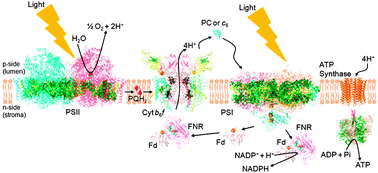On rate limitations of electron transfer in the photosynthetic cytochromeb6f complex
Abstract
Considering information in the crystal structures of the

- This article is part of the themed collection: Electron Transfer Theory
* Corresponding authors
a
Department of Biological Sciences, Hockmeyer Hall of Structural Biology, Purdue University, West Lafayette, USA
E-mail:
waclab@purdue.edu
Considering information in the crystal structures of the

 Please wait while we load your content...
Something went wrong. Try again?
Please wait while we load your content...
Something went wrong. Try again?
S. Saif Hasan and W. A. Cramer, Phys. Chem. Chem. Phys., 2012, 14, 13853 DOI: 10.1039/C2CP41386H
To request permission to reproduce material from this article, please go to the Copyright Clearance Center request page.
If you are an author contributing to an RSC publication, you do not need to request permission provided correct acknowledgement is given.
If you are the author of this article, you do not need to request permission to reproduce figures and diagrams provided correct acknowledgement is given. If you want to reproduce the whole article in a third-party publication (excluding your thesis/dissertation for which permission is not required) please go to the Copyright Clearance Center request page.
Read more about how to correctly acknowledge RSC content.
 Fetching data from CrossRef.
Fetching data from CrossRef.
This may take some time to load.
Loading related content
